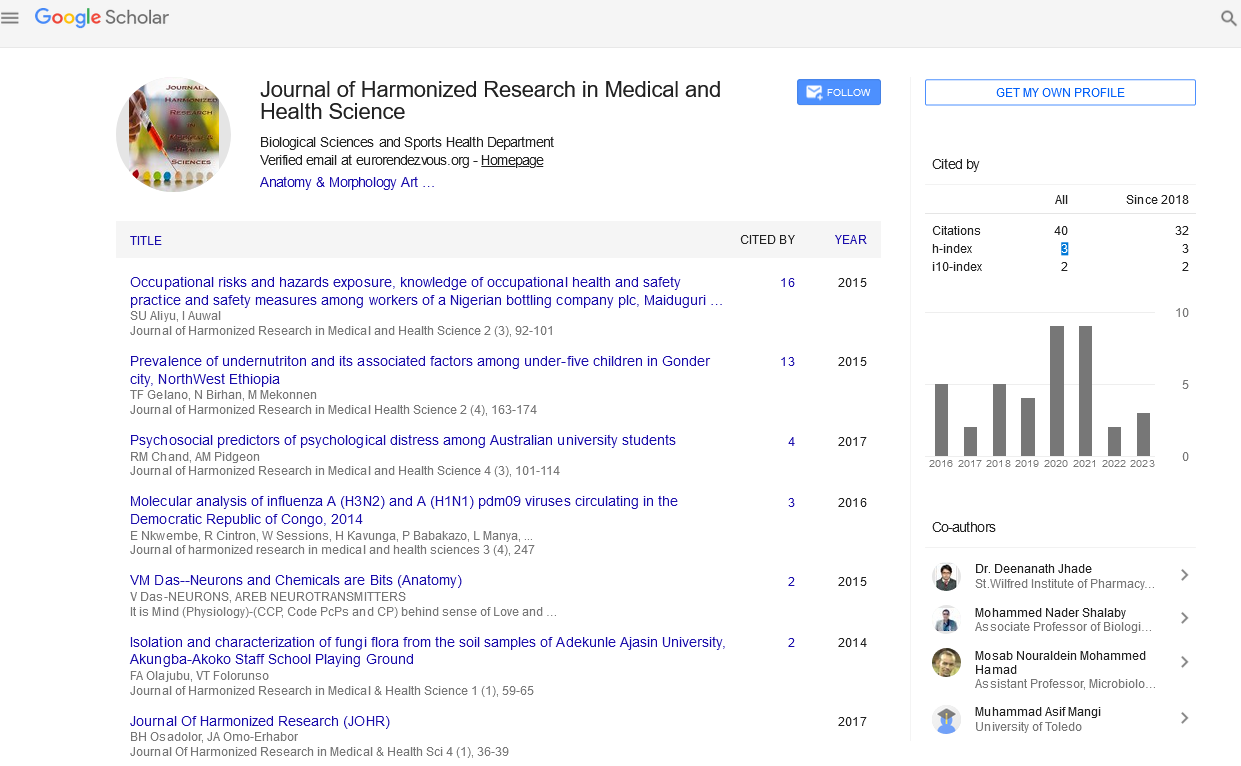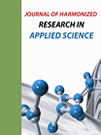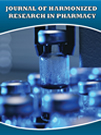Research Article - (2021) Volume 8, Issue 1
OLFACTORY DISTRACTION FOR MANAGEMENT OF NAUSEA IN PALLIATIVE CARE PATIENTS
Antonio Gabriel De Leon Corona1 and Jessica Chin2*2Department of Hospice and Palliative Medicine, Division of Geriatrics and Palliative Medicine, Donald and Barbara Zucker School of Medicine, Northwell Health, New York, USA
Received: Aug 02, 2021 Published: Aug 24, 2021
Abstract
Nausea is one of the most common and debilitating symptoms Palliative Care patients’ experience. This can be caused by the life-limiting illness itself, its complications, or its treatments. While there are many options for management, including anti-emetics and motility agents, patients may develop refractory nausea or even intolerance to these treatments. Drug interactions, sedation, extrapyramidal effects, serotonin syndrome, and prolonged QT intervals may all preclude use of these medications.
Olfactory distraction using alcohol swabs has supporting literature in the emergency care setting as a means of alleviating nausea in a safe and effective way. We present a case series of three patients admitted to a Northwell facility who were referred to the Palliative Care consult service for severe nausea. The patients had nausea of varying etiology and were successfully managed with inhalation of alcohol swabs. This is the first study that looks into applying this intervention to the Palliative Care population as an easy-to-use, readily-available, and safe method to manage nausea.
mount nemrut tour from cappadocia
Keywords
Nausea, Vomiting, Olfactory distraction, Isopropyl alcohol swabs, Anti-emetics
Introduction
Nausea is one of the most prevalent and distressing symptoms dying patients experience [1-3] and in fact, its pervasiveness can be a marker of impending death [4]. Nausea is defined as a subjective sensation of epigastric or upper abdominal unpleasantness or awareness [5] associated with imminent vomiting [6]. However, there is no causal or temporal relationship between feeling nauseated and emesis, the latter being the actual forceful expulsion of gastric contents [7]. Although both can co- exist, nausea is considered the more disabling symptom of the two [8].
Nausea has a broad list of potential causes in the terminally- ill which can be categorized as being due to the primary disease itself or due to therapy [9]. Its pathophysiology is complex, involving the gastric, central nervous, and autonomic nervous systems [10]. While our understanding of its underlying mechanisms is still evolving, very much similar to pain, nausea has been found to be critically undertreated [11,12], which can negatively impact our patients’ quality of life [13].
Therapeutics are generally classified into anti-emetics (agents that suppress nausea and vomiting) and prokinetics (agents that modulate gastrointestinal motility). These medications are often used in combination for intense or persistent symptoms. Despite the availability of these interventions, patients may still develop intractable, usually unexplained, nausea. The distinction is made from acute nausea, which is self-limiting and usually diagnosed by clinical grounds alone [9,14]. The more challenging cases of refractory nausea pose a diagnostic and therapeutic challenge for providers, which can be potentially explained by a different pathophysiological pathway [14], especially in the setting of advanced illness. Furthermore, the adverse reactions inherent to some classes of anti-nausea treatment such as QT prolongation, sedation, and extrapyramidal and anticholinergic symptoms can compound the symptom burden palliative care patients are already experiencing [15].
On the grounds that nausea management for patients who are dying is crucial, palliativists should be prepared with various means to afford relief for these patients in the event that refractoriness or tolerance becomes issues. Here, we propose a rapid and minimally-invasive maneuver that potentially alleviates resistant nausea: olfactory distraction.
Olfactory distraction using isopropyl alcohol swabs has documented efficacy in emergency medicine literature [16,17]. By asking patients to inhale isopropyl alcohol pads that are readily available in clinical units, nausea was found to be significantly reduced. No trials, reports or observations have attempted to extrapolate this data to palliative care patients.
We identify three patients referred to our inpatient palliative care consultation service for severely uncontrolled nausea, which were successfully managed with olfactory distraction using isopropyl alcohol swabs. We will uses these cases to: 1) primarily introduce this intervention to the field of palliative care as a potential treatment option for nausea, 2) illustrate the theorized mechanism of action and do a brief review of available literature, and 3) hopefully set in motion more research to investigate its benefits for our patient population.
Case Presentation
The three patients we present were admitted to the Long Island Jewish Hospital or North Shore University Hospital, parts of the North well Health system in New York City. All were seen by the Palliative Care consult service for severely uncontrolled nausea. The patients were all amenable to the use of inhalation of alcohol swabs and gave their verbal consent. There were no physical barriers to our patients’ olfactory pathways, such as nasal cannulae, facial tumors, or nasogastric tubes. Additionally, they were all able to follow the intervention instructions and report their symptoms verbally to the providers.
Patients were asked to hold a 70% isopropyl alcohol swab about 1-2 cm under the nares [17] and take 2-4 deep inhalations about 2 seconds apart as many times as they wanted. A pre-intervention and a post-intervention nausea score was assessed using a likert scale from 0 to 10, with “0” indicating no nausea and “10” as extremely severe nausea. Patients were asked to report their post-intervention score 30 minutes after completing the intervention.
Patient 1
A 71 year old Female with a newly-diagnosed large cell neuroendocrine pancreatic tumor was referred to our service for untreated nausea. She had widespread metastases to her brain, adrenal glands, abdomen and lungs, which caused a mediastinal shift due to mass effect. Her nausea had lasted for days prior and was thought to be due to her extensive tumor burden. Her options for management were limited due to a prolonged QTc interval of 507 ms, therefore the primary medical team held first-line agents such as ondansetron and metoclopramide. The patient was offered intervention with 70% isopropyl alcohol swabs, which she agreed to try. She reported almost immediate and complete resolution of her nausea within a few minutes. The patient kept a few packets of alcohol swabs at bedside for her continued use. A repeat EKG was eventually done after we adjusted her medications, which showed a QTc interval of 426 ms. The patient was eventually started on ondansetron 4 mg PO every 6 hours.
Patient 2
A 66 year-old male with known Stage 4 cholangiocarcinoma complicated by peritoneal metastases, malignant ascites, and biliary obstruction for which a biliary drain had been inserted, was admitted to our hospital. Workup revealed multiple cystic lesions consistent with multifocal abscesses. He was also found to have klebsiella bacteremia. To compound these medical problems, the patient also developed stage 3 acute kidney injury (AKI), with BUN and creatinine peaking at 70 mg/dl and 4.95 mg/dl respectively. He was referred to the Palliative Care service for severe, intractable nausea and vomiting due to sepsis, liver pain, and renal insufficiency. He found no relief despite receiving intravenous ondansetron 4 mg every 6 hours around-the-clock plus intravenous metoclopramide as needed. The patient agreed to try inhaled isopropyl alcohol after we presented it to him as an option. He reported considerable abatement of his nausea within 30 minutes. As he recovered from sepsis and renal failure, his nausea improved as well. He was finally discharged and maintained only on occasional use of oral ondansetron.
Patient 3
An 82 year-old male with a history of a liver transplant and End Stage Renal Disease (ESRD) from a failed kidney allograft on hemodialysis, was admitted for osteomyelitis of his right foot. After consulting podiatry and vascular surgery, it was deemed his right lower extremity was not salvageable and that management of the infection necessitated a below-the-knee amputation. After a family meeting with Palliative Care, the patient decided to forego both surgery and renal replacement therapy to be on comfort measures. He developed nausea and vomiting soon after, likely a combination of sepsis and end-stage kidney disease. An EKG revealed a QTc interval of 506 ms. Our team then discussed medication options and their corresponding side effects with the patient. He opted to try inhalation of the isopropyl alcohol swabs first prior to trying anti-nausea drugs. His nausea was alleviated significantly within 30 minutes that he did not require any adjunctive interventions thereafter. The patient later on decided to withdraw from comfort measures and have the surgery on his leg. Despite going back on hemodialysis, the patient continued to save and use alcohol swabs for intermittent nausea.
Results
All three patients presented had varying etiologies of nausea, which included malignancy-associated obstructive dysmotility, infectious, and metabolic causes (Table 1). All three patients had prolonged QTc intervals with Patients 1 and 3 having QTc intervals exceeding 500 ms. Patient 2 had persistent nausea despite being on two intravenous agents. Patients 1 and 3 were not started on any anti-nausea medications by their primary medical teams due to their QTc interval. All three patients reported severe nausea during our initial visit with them. Their combined average nausea score prior to olfactory distraction was 8 out of 10.
| Patient 1 | Patient 2 | Patient 3 | |
|---|---|---|---|
| Age | 71 | 66 | 82 |
| Gender | Female | Male | Male |
| Race | White | African American | White |
| Underlying diagnosis | Neuroendocrine pancreatic tumor | Cholangio carcinoma, hepatic abscesses, bacteremia, AKI | Osteomyelitis, ESRD |
| Mechanism of nausea | Obstructive, dysmotility | Infectious/inflammatory, metabolic | Infectious/inflammatory, metabolic |
| QTc | 507 | 460 | 506 |
| Pre-intervention nausea Score (0-10) | 10 | 6 | 8 |
| Post-intervention nausea Score (0-10) | 0 | 3 | 5 |
| Anti-emetics used in the 24 hours prior to intervention | None | Ondansetron 4 mg IV | None |
| Metoclopramide 5 mg IV |
Table 1: Characteristics of patients with nausea and vomiting with pre and post isopropyl alcohol intervention scores
All three patients reported a significant decrease in their nausea after the isopropyl alcohol inhalation. The average nausea score reported by our patients after our intervention was 2.7.
Of note, Patient 1 was observed to have abatement of her nausea within minutes of trying the alcohol swabs. Patients 2 and 3 felt relief within 30 minutes. The effect of the inhalation therapy seemed to persist as during our subsequent visits with them, the patients shared that they were still using the alcohol swabs even days after the initial intervention.
None of the patients reported any adverse reactions such as nasopharyngeal irritation, worsened nausea or gastrointestinal upset, headaches or dizziness.
Discussion
Nausea is a complex, multifactorial symptom that is very common in Palliative Care patients. When managing nausea, Palliative Care providers consider evidencebased guidelines that outline best practice depending on the etiology. This usually occurs in the setting of a highstress situation especially when caring for patients who are severely ill due to complications of their advanced disease. In these situations, providers may not have the time or access to testing or treatment protocols to help guide them. Additionally, it is not uncommon for our patient population to be at risk for polypharmacy and drug interactions, posing risks such as sedation, extrapyramidal symptoms, serotonin syndrome, and QT interval prolongation. Furthermore, the availability of different lines of medications for different routes of administration may be limited in most clinical areas, as well. Having a readily-accessible, safe and fastacting way to manage nausea, such as olfactory distraction with alcohol swabs, is therefore an invaluable tool in the Palliative Care toolbox.
The recent evidence behind using isopropyl alcohol to treat nausea and vomiting has been mainly in the Emergency Department (ED) setting. One double-blinded, threearm Randomized Controlled Trial (RCT) compared 120 nonpregnant adults in the ED, with mild-moderate nausea and vomiting, using inhaled isopropyl alcohol, oral ondansetron or both [17]. The study found that at 30 minutes, the mean nausea scores of all arms decreased significantly. There was no difference, however, between the ondansetron group and the isopropyl alcohol group in terms of mean reduction from baseline nausea scores. In sub-analysis, the researchers found that all the patients exposed to isopropyl alcohol had lower mean nausea scores for the entire stay in the ED and furthermore, had better satisfaction scores. Additionally, fewer rescue antiemetic’s with inhaled isopropyl alcohol (26% vs. 45%, though not statistically significant) was found in the same study.
Beadle et al, performed a blinded ED RCT randomizing 84 patients to inhaled isopropyl alcohol or saline-soaked pads (placebo), which resulted in a lower post intervention nausea score (3 vs. 6 [placebo] out of 10) in the isopropyl alcohol group, along with improved patient satisfaction scores in the intervention group [18].
Another study looked at iatrogenic nausea, comparing the effect of inhaled isopropyl alcohol versus intravenous ondansetron in post-operative women who received general anesthesia. The authors found that the alcohol group achieved 50% reduction of their nausea level significantly faster in contrast to the ondansetron group (6.3 mins vs. 27.7 mins) [19]. There are earlier inquiries detailing the effectiveness of olfactory distraction using isopropyl alcohol in post-operative transport-related nausea [20,21] and in children after administration of general anesthesia for elective surgery [22].
Aromatherapy using other agents has also been investigated in holistic journals. Peppermint alone [23-25] or in combination [26], as well as ginger [26-28] seem to be promising interventions. However since these aren’t readily available in most clinical settings, they will not be included in the scope of this paper.
The mechanism itself of the anti-nausea effect of inhaled isopropyl alcohol is unclear. The concept of olfactory distraction is derived from multiple studies looking into aromatherapy, including, alcohol, and its effect on nausea [26,29-34]. The sense of smell and nausea has always been interrelated. Developing an urge to vomit because of an unpleasant odor is a universally familiar event. The hypothesis of a dynamic threshold proposes that each person has a fluctuating threshold for nausea that is constantly changing, depending on emotional and psychological states [35]. This can explain how there is so much interpersonal variability in response to a potentially nauseating stimulus. As the sensorineural inputs that can give rise to feeling nauseated arise from multiple sources, including the visceral system [35], it can be inferred that the olfactory system is likely a major player in this pathway.
A lot of research in this area comes from the field of Obstetrics and Gynecology. Dysosmia, a derangement of perceiving an odorant [36] has been associated with events that can lead to hyperemesis gravidarum [37]. In fact, smells, more than taste, were discovered to be more effective drivers of nausea in pregnancy [38]. Interestingly enough, peppermint was revealed to be the least nauseating smell among the selected aromas in the same study [38]. Allelic variations of the DRD2 dopaminergic receptor gene have been cited as the shared, underlying mechanism for olfactory-triggered nausea [39].
Activation of the olfactory pathway does not seem to be the only theorized mechanism that leads to alleviation of nausea. Anderson LA and Gross JB found that the anti-emetic effect of aromatherapy was independent of the actual aroma, as they observed that saline placebo was just as effective as isopropyl alcohol or peppermint for nausea relief [29]. It was suggested that the controlled breathing pattern of the participants was the primary reason for the relieving effect which may be due to the close proximity of the vomiting center to the respiratory centers in the fourth ventricle.
Controlled diaphragmatic breathing has been evaluated to have success in symptom management of post-operative nausea [40,41] and nausea from motion sickness [42,43] with or without adjunctive aromatherapy. It seems that an imbalance in the autonomic nervous system, caused by decreased parasympathetic and increased sympathetic nervous system activity, possibly explains the onset of nausea and its associated symptoms of diaphoresis, hyper salivation, and tachycardia [44]. An interplay between this autonomic outflow and central nervous system control seems to be related to nausea intensity, and could be implicated in how targeting more central networks might be of therapeutic significance [45-47]. One way to do this is by paced respiration, which has shown to increase parasympathetic nervous system activation.
With regards to safety, a meta-analysis of using alcohol aromatherapy for nausea, which included nine studies and 402 participants, did not find any adverse event reported [30]. There were also no adverse events reported for the two most recent RCT’s done in the emergency department setting [17,18]. However, while isopropyl alcohol inhalation was not shown to have short-term effects as the interventions were measured acutely within a 30-minute time frame, repeated use of this intervention may potentially present with local irritation or other reactions. Pregnant patients were excluded from the RCT’s.
Conclusion
Alcohol swab inhalation for nausea management is an inexpensive, non-invasive, easy to use, safe and readily available intervention in clinical areas. While olfactory distraction has been proven to be effective in the emergency room setting, our study is the first to apply this technique to palliative care patients. Extending its use in the palliative tool kit for nausea management would provide patients and palliativists options when other antiemetic’s are contraindicated or not effective. Exploring the utility of the convenient alcohol swab in nausea management within larger palliative populations would be of great benefit to the growing number of patients being diagnosed with complex conditions that cause debilitating symptoms.
References
- Conill C, Verger E, Henríquez I, Saiz N, Espier M, Lugo F, et al. Symptom prevalence in the last week of life. J Pain Symptom Manage. 1997;14(6):328-331
- Kutner JS, Kassner CT, Nowels DE. Symptom burden at the end of life: hospice providers' perceptions. J Pain Symptom Manage. 2001;21(6):473-480
- Baines MJ. ABC of palliative care. Nausea, vomiting, and intestinal obstruction. Br Med J. 1997;315(7116):1148.
- Chang VT, Hwang SS, Kasimis B, Thaler HT. Shorter symptom assessment instruments: the condensed memorial symptom assessment scale (CMSAS). Cancer Invest. 2004;22(4):526-536.
- Smith HS. A receptor-based paradigm of nausea and vomiting. J Pain Symptom Manage. 2005;1(1):11-23
- Hasler WL, Chey WD. Gastroenterology. 2003; 125(6):1860-1867
- Harris DG. Nausea and vomiting in advanced cancer. Br Med Bull. 2010; 96:175-185.
- Stern R, Koch K, Andrews P. Nausea: mechanisms and management. New York: Oxford University Press.2011.
- Glare P, Miller J, Nikolova T, Tickoo R. Treating nausea and vomiting in palliative care: A review. Clin Interv Aging. 2011;6:243-259
- Singh P, Yoon SS, Kuo B. Nausea: A review of pathophysiology and therapeutics. Therap Adv Gastroenterol. 2016;9(1):98-112.
- Reuben DB, Mor V. Arch Intern Med. 1986; 146(10):2021-2023.
- Greaves J, Glare P, Kristjanson LJ, Stockler M, Tattersall MH. Undertreatment of nausea and other symptoms in hospitalized cancer patients. Support Care Cancer. 2009;17(4):461-464.
- Pasricha PJ, Colvin R, Yates K, Hasler WL, Abell TL, Unalp-Arida A , et al. Characteristics of patients with chronic unexplained nausea and vomiting and normal gastric emptying. Clin Gastroenterol Hepatol. 2011;9(7):567-576.
- Quigley EM, Hasler WL, Parkman H. Gastroenterology. 2001; 120(1):263-286.
- Athavale A, Athavale T, Roberts DM. Antiemetic drugs: What to prescribe and when. Aust Prescr. 2020;43(2):49
- Pallin D, Arana A, Pallin DJ. Inhaled isopropyl alcohol superior to oral ondansetron as an antiemetic. Ann Emerg Med. 2018;72(6):645-653.
- April MD, Oliver JJ, Davis WT, Ong D, Simon EM, Ng PC. Aromatherapy versus oral ondansetron for antiemetic therapy among adult emergency department patients: A randomized controlled trial. Ann Emerg Med. 2018;72(2):184-193.
- Beadle KL, Helbling AR, Love SL, April MD, Hunter CJ. Isopropyl alcohol nasal inhalation for nausea in the emergency department: a randomized controlled trial. Ann Emerg Med. 2016;68(1):1-9.
- Winston AW, Rinehart RS, Riley GP, Vacchiano CA, Pellegrini JE. Comparison of inhaled isopropyl alcohol and intravenous ondansetron for treatment of postoperative nausea. AANA j. 2003;71(2):127-132.
- Smiler BG, Srock M. Isopropyl alcohol for transport-related nausea. Anesthesia & Analgesia. 1998;87(5):1214.
- Langevin P, Brown M. A simple, innocuous, and inexpensive treatment for postoperative nausea and vomiting. Anesthesiology 1997;84 :971.
- Wang SM, Hofstadter MB, Kain ZN. An alternative method to alleviate postoperative nausea and vomiting in children. J Clin Anesth. 1999;11(3):231-234.
- Mohr C, Jensen C, Padden N, Besel JM, Brant JM. Peppermint essential oil for nausea and vomiting in hospitalized patients: Incorporating holistic patient decision making into the research design. J Holist Nurs. 2021;39(2):126-134.
- Ahmadi Y, Rezaei J, Rezaei M, Khatony A. Comparison of the effect of inhalation aromatherapy with 10% and 30% peppermint essential oils on the severity of nausea in abdominal surgery patients. vid Based Complement Alternat Med .2020;2020.
- Lane B, Cannella K, Bowen C, Copelan D, Nteff G, Barnes K, et al. Examination of the effectiveness of peppermint aromatherapy on nausea in women post C-section. J Holist Nurs. 2012;30(2):90-104.
- Hunt R, Dienemann J, Norton HJ, Hartley W, Hudgens A, Stern T, Divine G. Aromatherapy as treatment for postoperative nausea: A randomized trial. Anesth Analg. 2013;117(3):597-604.
- Lee YR, Shin HS. Effectiveness of ginger essential oil on postoperative nausea and vomiting in abdominal surgery patients. J Altern Complement Med. 2017;23(3):196-200
- Evans A, Malvar J, Garretson C, Pedroja Kolovos E, Baron Nelson M. The use of aromatherapy to reduce chemotherapy-induced nausea in children with cancer: a randomized, double-blind, placebo-controlled trial. J Pediatr Oncol Nurs. 2018;35(6):392-398.
- Evans A, Malvar J, Garretson C, Pedroja Kolovos E, Baron Nelson M. The use of aromatherapy to reduce chemotherapy-induced nausea in children with cancer: a randomized, double-blind, placebo-controlled trial. J Pediatr Oncol Nurs. 2018;35(6):392-398.
- Hines S, Steels E, Chang A, Gibbons K. Aromatherapy for treatment of postoperative nausea and vomiting. Cochrane Database Syst Rev.2012;(4):CD007598.
- Anderson LA, Gross JB. Aromatherapy with peppermint, isopropyl alcohol, or placebo is equally effective in relieving postoperative nausea. J Perianesth Nurs. 2004;19(1):29-35.
- Merritt BA, Okyere CP, Jasinski DM. Isopropyl alcohol inhalation: Alternative treatment of postoperative nausea and vomiting. Nursing research. 2002;51(2):125-128.
- Chiravalle P, McCaffrey R. Alternative therapy applications for postoperative nausea and vomiting. Holist Nurs Pract. 2005;19(5):207-210.
- Mamaril ME, Windle PE, Burkard JF. Prevention and management of postoperative nausea and vomiting: A look at complementary techniques. J Perianesth Nurs.2006 ;21(6):404-410.
- Tate S. Peppermint oil: A treatment for postoperative nausea. J Adv Nurs.1997;26(3):543-549.
- Stern RM. The psychophysiology of nausea. Acta Biol Hung. 2002;53(4):589-599.
- Leopold D. Distortion of olfactory perception: Diagnosis and treatment. Chem Senses. 2002;27(7):611-615.
- Cameron EL. Pregnancy and olfaction: A review. Front Psychol. 2014 Feb 6;5:67
- Tan PC, Kartik B, Thanendran P, Zakaria R, Win ST, Omar SZ. Taste, smell and food-related nausea and vomiting responses in hyperemesis gravidarum: A case-controlled study. Sci Rep.2020;10(1):1-8.
- Heinrichs L. Linking olfaction with nausea and vomiting of pregnancy, recurrent abortion, hyperemesis gravidarum, and migraine headache. Am J Obstet Gynecol. 2002;186(5):S215-S219.
- Sites DS, Johnson NT, Miller JA, Torbush PH, Hardin JS. Controlled breathing with or without peppermint aromatherapy for postoperative nausea and/or vomiting symptom relief: A randomized controlled trial. J Perianesth Nurs. 2014;29(1):12-19.
- Cronin SN, Odom-Forren J, Roberts H, Thomas M, Williams S, Wright MI. Effects of controlled breathing, with or without aromatherapy, in the treatment of postoperative nausea. J Perianesth Nurs. 2015;30(5):389-397.
- Russell ME, Hoffman B, Stromberg S, Carlson CR. Use of controlled diaphragmatic breathing for the management of motion sickness in a virtual reality environment. Appl Psychophysiol Biofeedback. 2014;39(3):269-277.
- Yen Pik Sang FD, Billar JP, Golding JF, Gresty MA. Behavioral methods of alleviating motion sickness: Effectiveness of controlled breathing and a music audiotape. J Travel Med. 2003;10(2):108-111
- Horn CC. Why is the neurobiology of nausea and vomiting so important? Appetite. 2008;50(3):430-434.
- C Horn C. The medical implications of gastrointestinal vagal afferent pathways in nausea and vomiting. Curr Pharm Des. 2014;20(16):2703-2712.
- LaCount LT, Barbieri R, Park K, Kim J, Brown EN, Kuo B, et al. Static and dynamic autonomic response with increasing nausea perception. Aviat Space Environ Med.2011;82(4):424-33.










